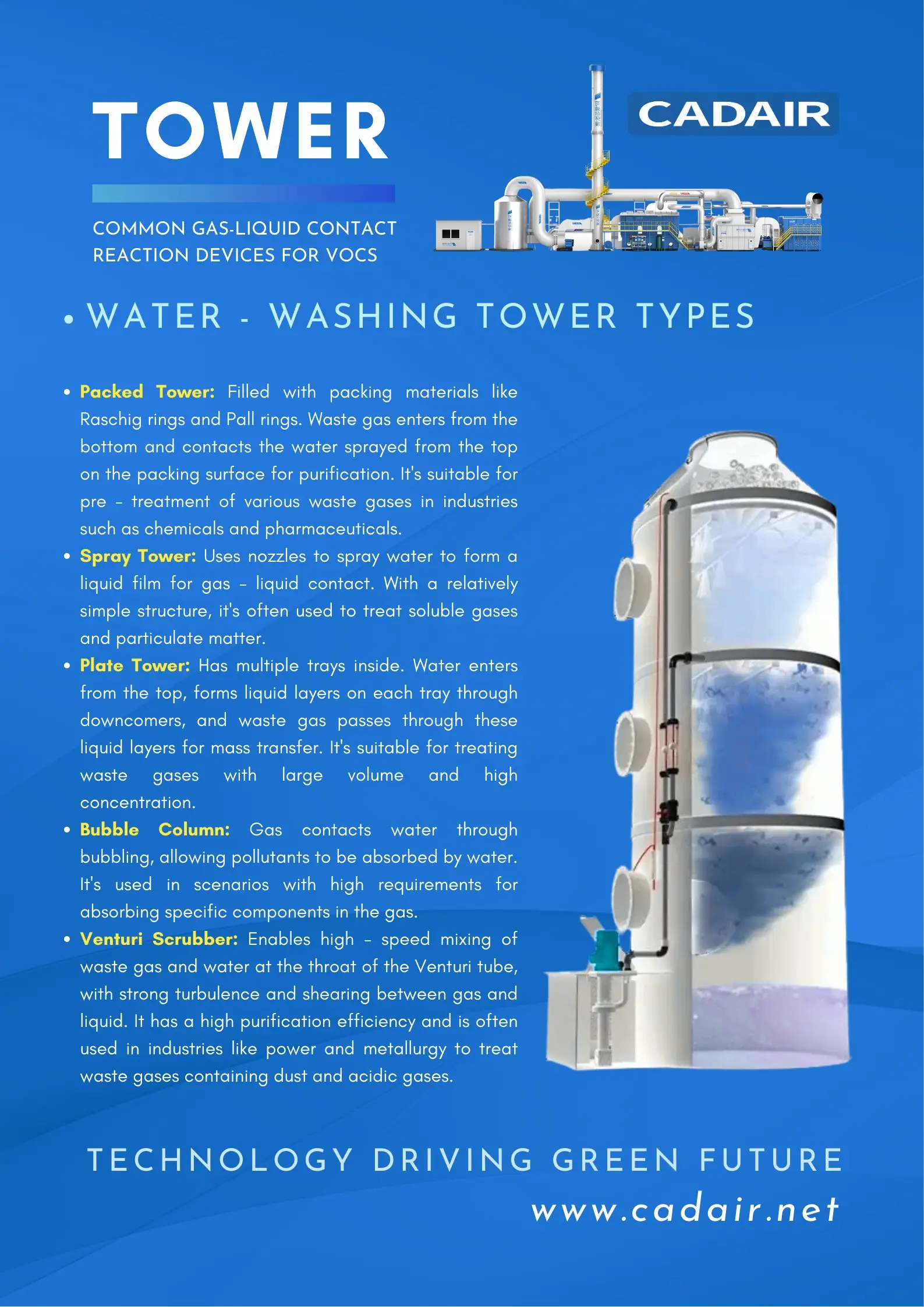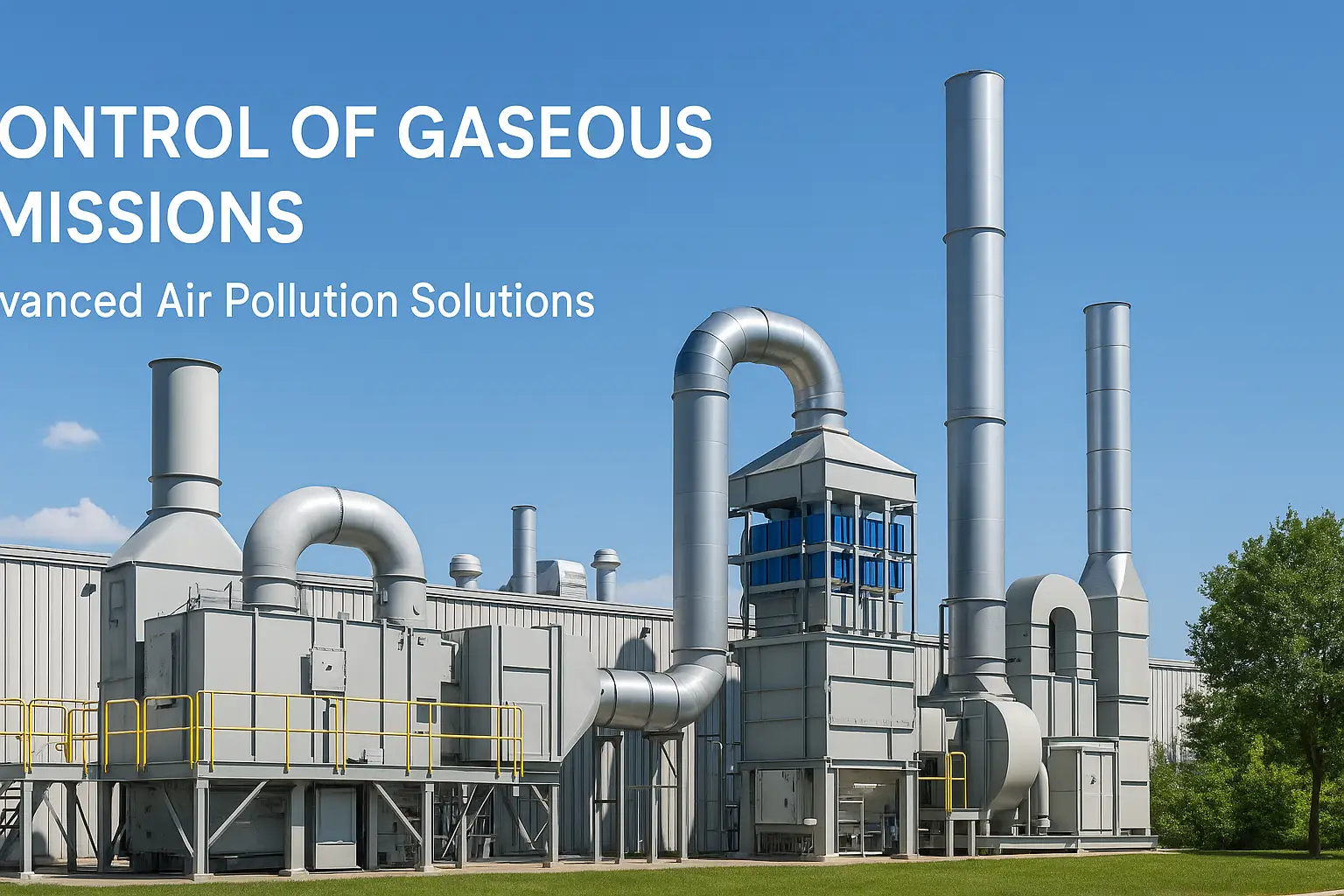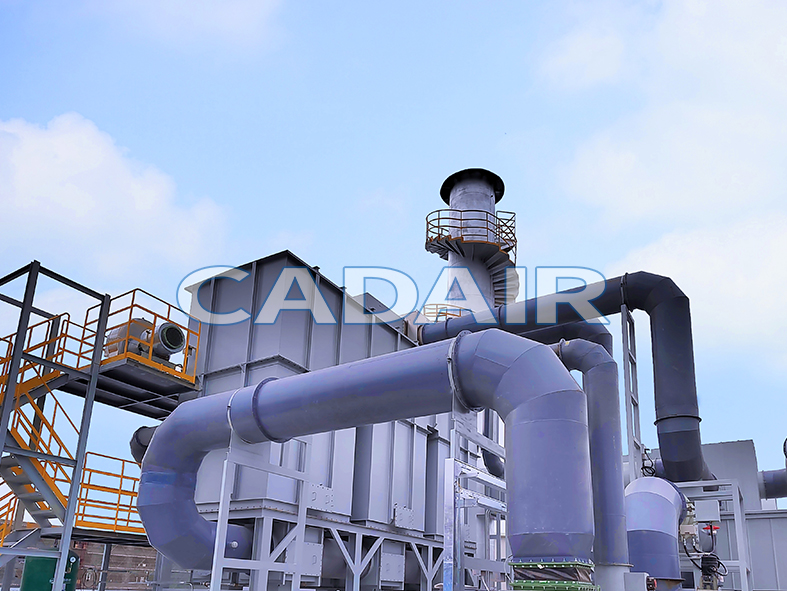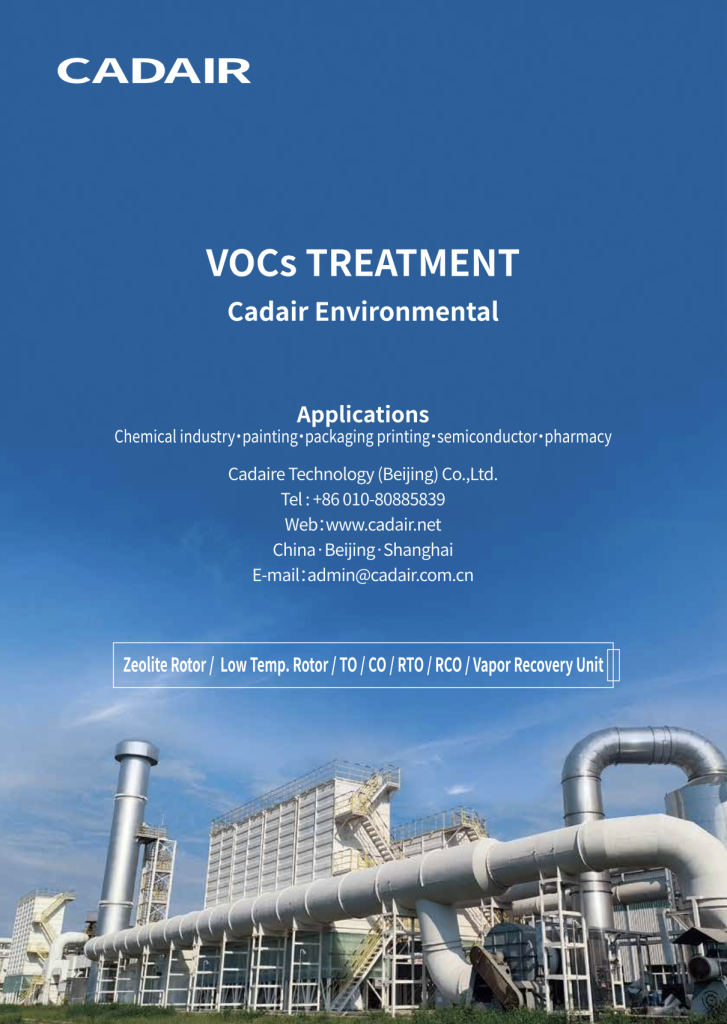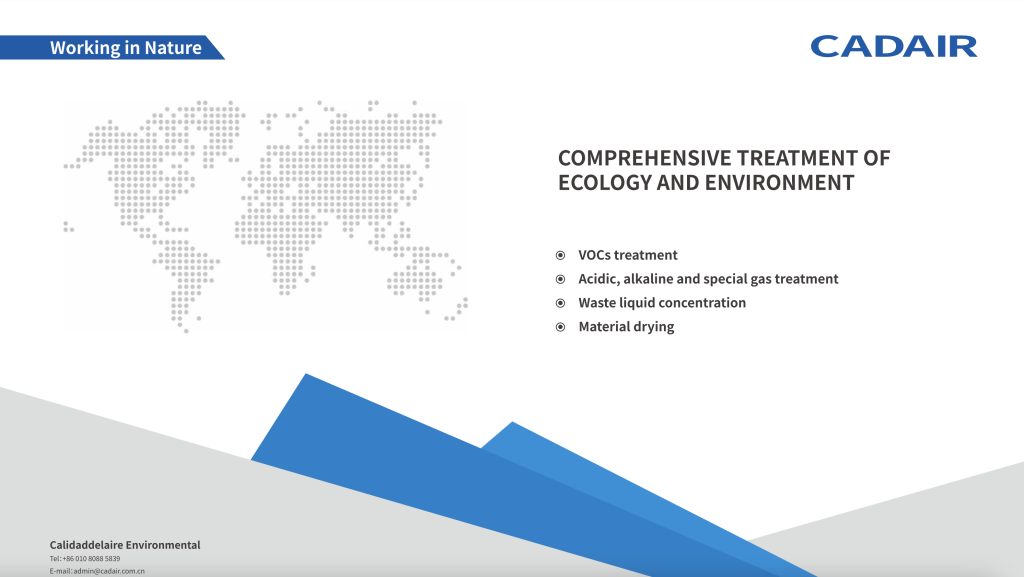In modern waste gas treatment equipment, the water-washing tower (scrubber) is an essential component of oxidation combustion systems. Whether combined with an RTO (Regenerative Thermal Oxidizer), a catalytic oxidizer (CO), or an RCO (Regenerative Catalytic Oxidizer), it plays a vital role in protecting downstream units, improving VOC removal efficiency, and ensuring the stability of the entire system.
👉 Visit our Homepage for an overview of CADAIR’s complete environmental protection equipment solutions.
1. Temperature Reduction
Oxidation combustion produces high-temperature gases.
- The water-washing tower sprays water to directly cool exhaust streams.
- Evaporative cooling ensures gas temperature is suitable for catalytic or thermal treatment.
- Prevents thermal shock and prolongs the life of ceramic beds in RTO systems.
👉 Learn more about our Air Pollution Control Equipment for effective VOC treatment.
2. Dust Removal
Exhaust gases often contain dust and fine particles.
- Water curtains capture particles through collision and droplet binding.
- Achieves gas–solid separation, reducing wear on burners and ceramic media.
👉 Check our real-world Case Studies to see how scrubbers protect pollution control equipment in practice.
3. Removal of Water-Soluble Pollutants
Some gaseous pollutants (e.g., hydrogen chloride, ammonia) are water-soluble.
- The tower enables gas–liquid mass transfer, dissolving harmful pollutants into water.
- Reduces the chemical load on downstream catalytic oxidizers or RTO systems.
👉 Explore industry-specific Solutions for handling corrosive and soluble exhaust gases.
4. Gas Humidity Adjustment
Appropriate humidity supports efficient oxidation and catalysis:
- Prevents gas from being too dry or too wet.
- Stabilizes reaction conditions in CO, RCO, and TO (Thermal Oxidizers/thermal incinerators).
- Extends catalyst life and improves VOC destruction efficiency.
Conclusion
The water-washing tower in waste gas treatment equipment is more than a cooling device. It integrates temperature control, dust removal, pollutant absorption, and humidity regulation—ensuring stable operation of air pollution control equipment like RTOs, COs, RCOs, and thermal incinerators.
👉 Contact us through our Homepage to discover how CADAIR’s pollution control equipment helps industries achieve sustainable VOC treatment and compliance with global standards.

